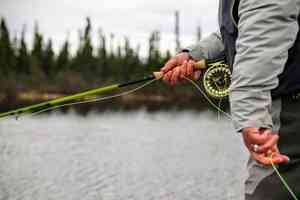In August 2020, Congress did something remarkable. In the throes of a heated political campaign season and in the middle of a deadly viral pandemic that was literally killing Americans left and right, the nation’s legislative branch set aside its daily political rancor and passed the Great American Outdoors Act.
The act represents the single-greatest monetary investment in the nation’s unique system of public lands, even if some were sharply critical of its tradeoffs. It permanently authorizes full funding for the Land and Water Conservation Fund ($900 million a year derived from offshore oil and gas drilling royalties) and created the National Parks and Public Land Legacy Restoration Fund.
The former was an existing fund, but it was constantly subject to raids by various congressional interests. In its 50-year history leading up to 2020, the LWCF was fully funded only once. Its purpose has always been to fund projects that improve access to recreation around the country, and, over the years, it has funded $4 billion in access and improvement projects in every single county in America. Imagine what it could have funded had Congress kept is sticky fingers out of the fund all those years.
The latter, the Legacy Restoration Fund, was initiated with the passage of the GAOA and is designed to address the flagging infrastructure across the country’s public lands complex. It authorizes the expenditure of $1.9 billion in taxpayer money to be spent annually through 2024 on deferred maintenance projects in national parks, national wildlife refuges and across the BLM and U.S. Forest Service spectrum. If you’ve visited one of the country’s iconic national parks – say, Yellowstone or Yosemite – in recent years and have witnessed everything from crumbling buildings to pothole-pocked roads, you understand how significant this is.
“These deferred maintenance projects are essential as many communities rely on the Forest Service road network to get to schools, stores and hospitals; as well as provide access to both forest management and recreation opportunities on national forests and grasslands,” said Agriculture Secretary Tom Vilsack. “We feel responsibility for this maintenance strongly, and we take great pride in being the stewards of our nation’s forests and grasslands.”
In the coming fiscal year, 2024, the GAOA will direct federal land-management agencies ranging from the Department of Interior to the U.S. Department of Agriculture to spend $2.8 billion on various conservation, maintenance and access projects on public lands across the country. It will have a direct benefit on virtually all Americans, from history buffs who want to tour Civil War battlefields to fly fishers, who are clamoring for more and better access to quality trout water.
“The Great American Outdoors Act allows us to increase outdoor recreation opportunities, improve infrastructure on our public lands, invest in the U.S. economy, and honor our commitment to Tribal communities,” says Secretary Deb Haaland of the U.S. Department of Interior.
Indeed, in 2024 alone, the LWCF will invest $430 million in land acquisition programs and another $470 million will go toward state and local projects in the form of matched grant money. The latter could be spent on anything from complex local stream restoration projects to improved restroom facilities at campgrounds or interpretive centers.
Sadly, unless Congress sees fit to extend it, the LRF is on its next-to-last year – it will expire after 2025. It may not seem like a big deal – Congress finally came to understand the issue with deferred maintenance and the obvious demand for more and better outdoor recreation opportunities and then found a way to pay for it – but this investment is something that more than pays for itself.
In 2024 alone, the LRF will go toward 56 deferred maintenance projects on Interior land and 83 similar projects on Forest Service land. The projects focus on improving recreation facilities, water and utility infrastructure, roads, bridges, rails, parking areas and the like. Put together, Interior says the projects support almost 21,000 American jobs and contribute more than $2 billion to the economy. And these economic benefits reach far and wide, from urban green space to wild country in the most remote stretches of America.
Unfortunately, in an insanely partisan political climate where it’s apparently more important to score political body blows to their opponents than it is to pay the nation’s bills, members of Congress aren’t likely to come together, ala 2020, to approve a new round of LRF funding. For many Americans, the first few years of the LRF may not have even registered – that’s now severe the country’s maintenance backlog is on our public lands. More is needed, but more isn’t likely to come.
But the big coup in the GAOA was full funding for the Land and Water Conservation Fund. It took years of cajoling and convincing to make Congress do what it should have done every year – use the money as intended and not to patch budgetary holes. Funding for the LWC is now permanent, and means every single year, federal agencies will have $900 million to spend on outdoors and recreation access.
No, it’s not a panacea – the federal maintenance backlog will likely continue to grow, thanks to decades of neglect, and public lands funding will always be a sticky wicket for those who value public lands access and the recreation opportunities it provides (not to mention the $862 billion that outdoor recreation contributes to the economy every single year).
Upkeep of our public lands through the National Parks and Public Land Legacy Restoration Fund should be an every-year commitment, not just a five-year quick fix to placate the masses.































Comments